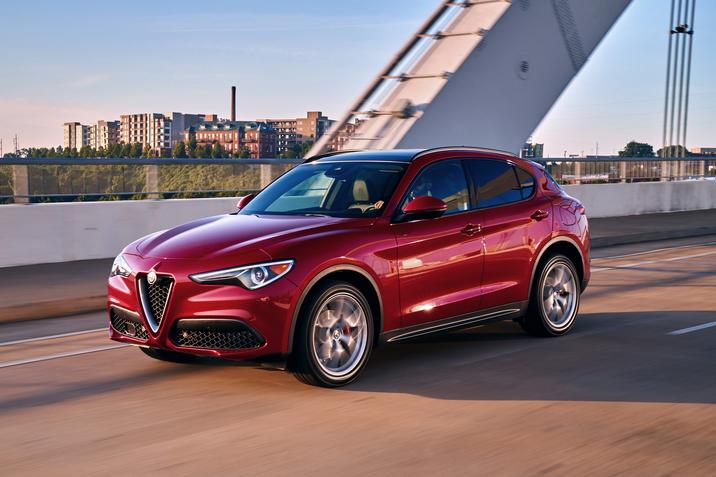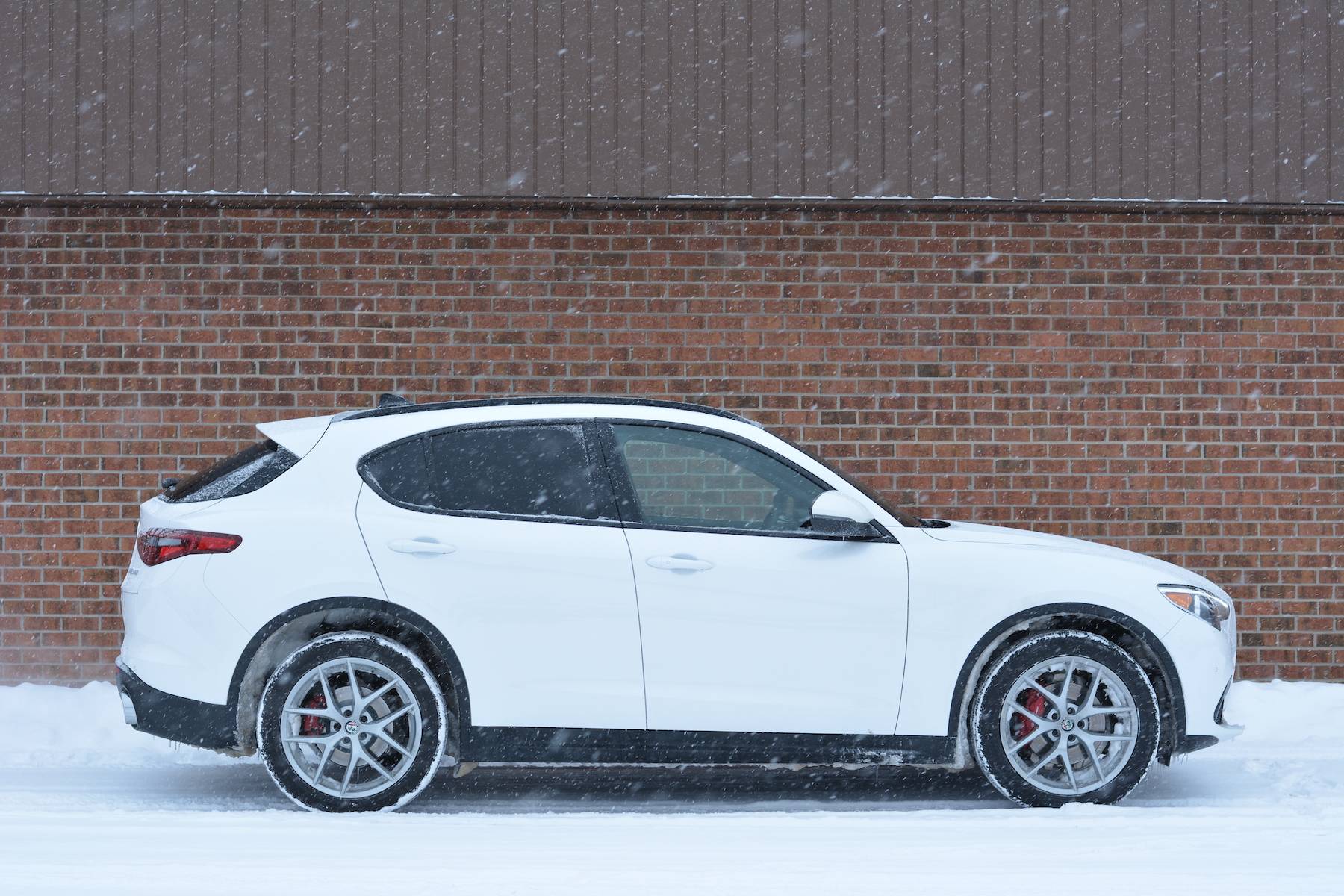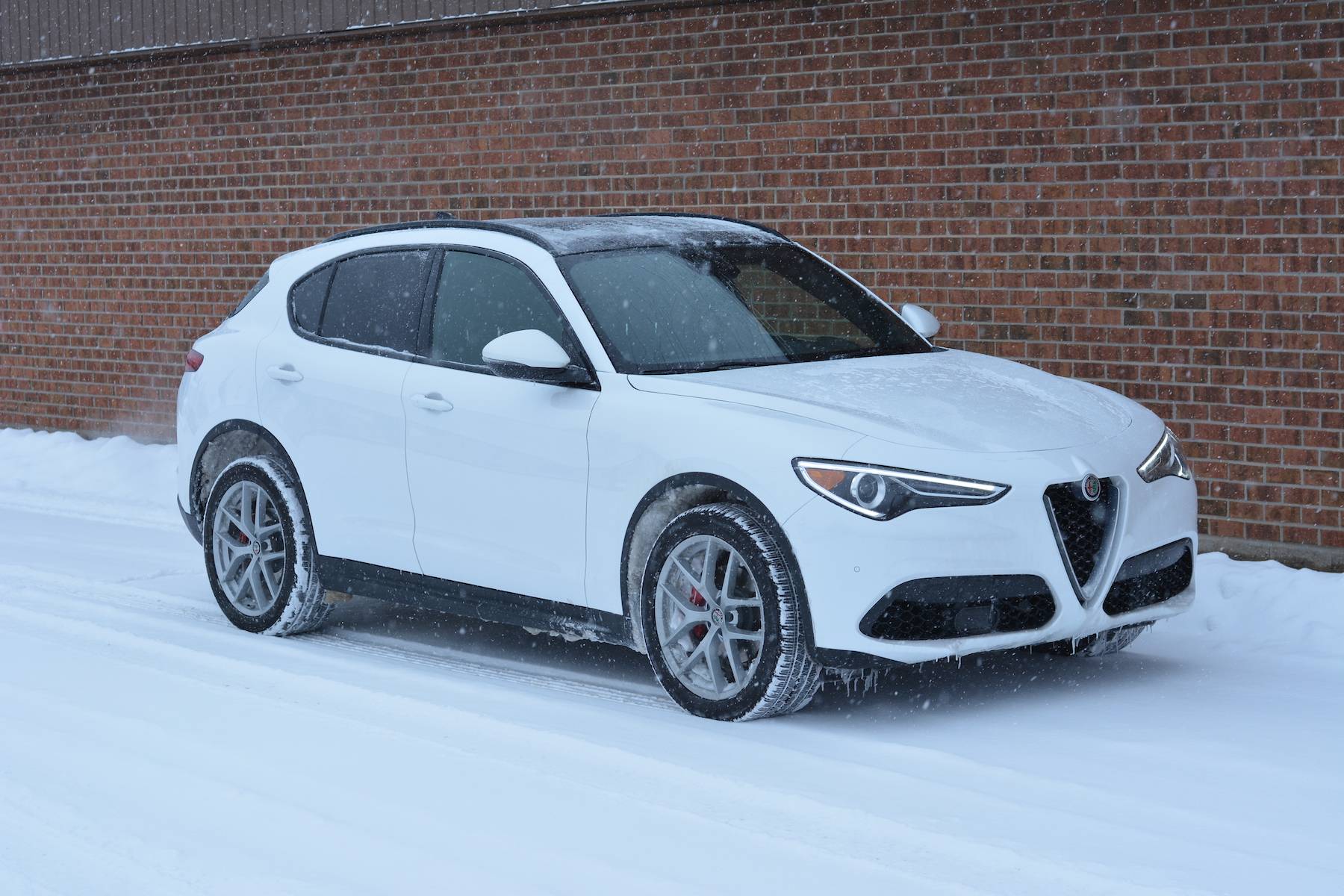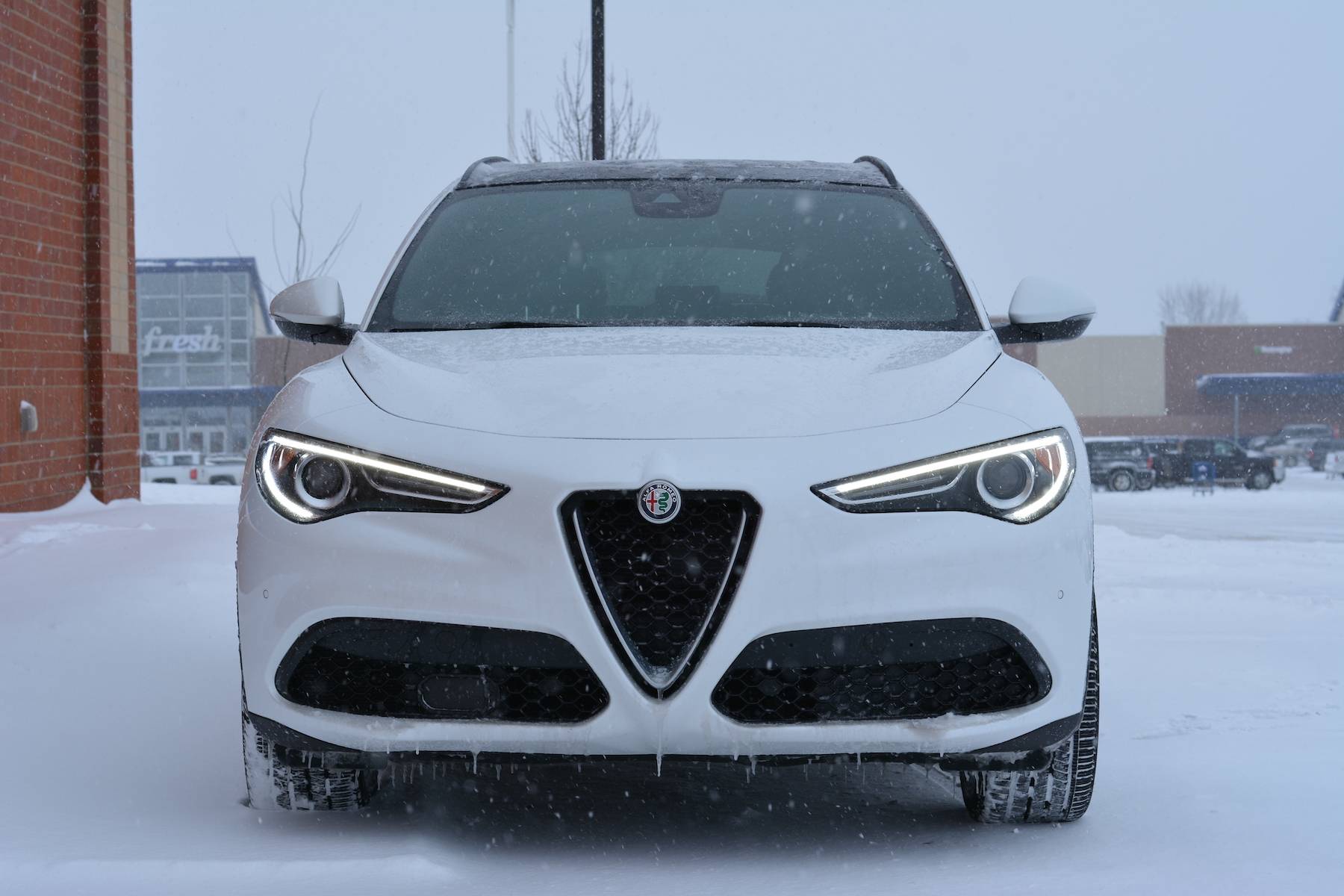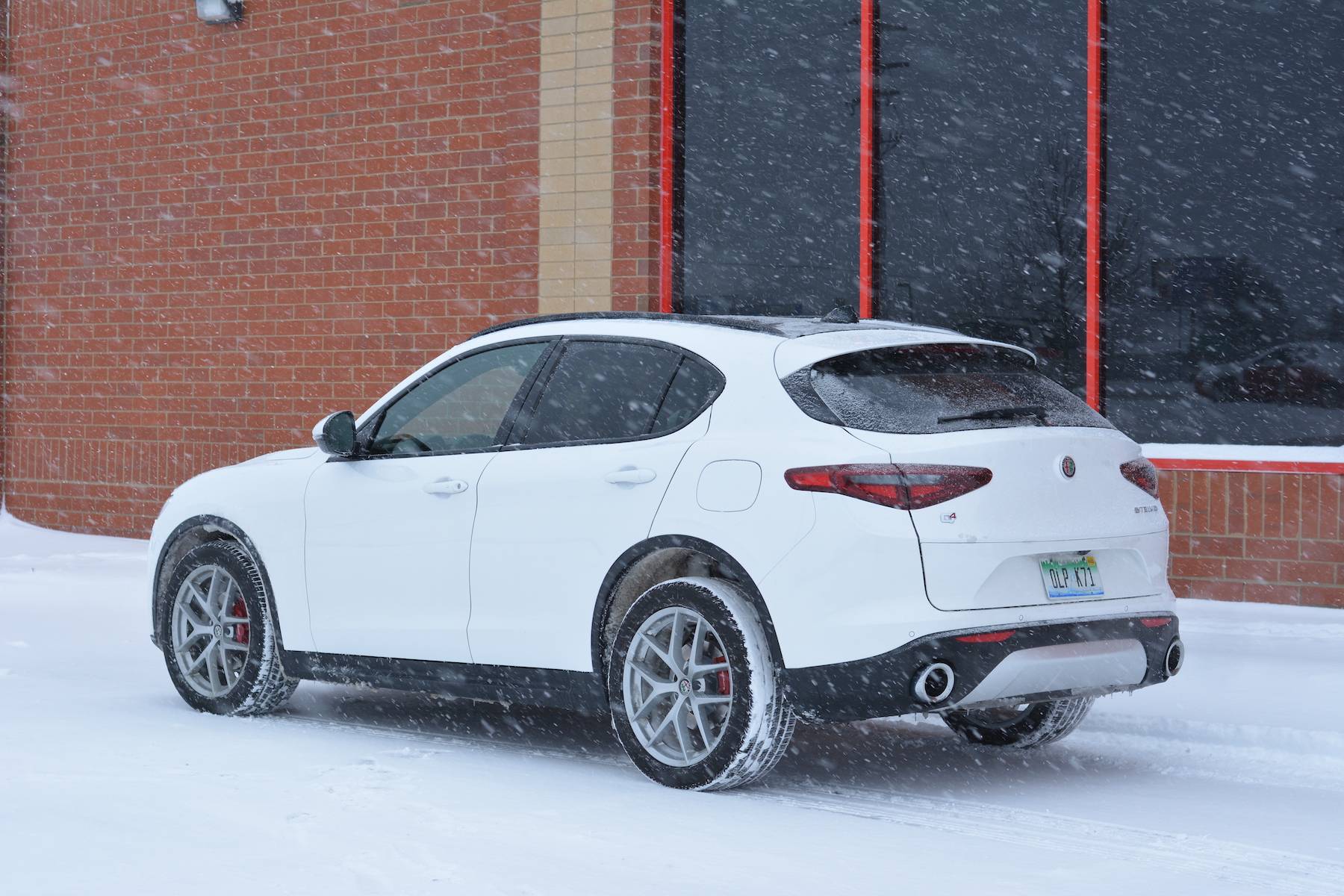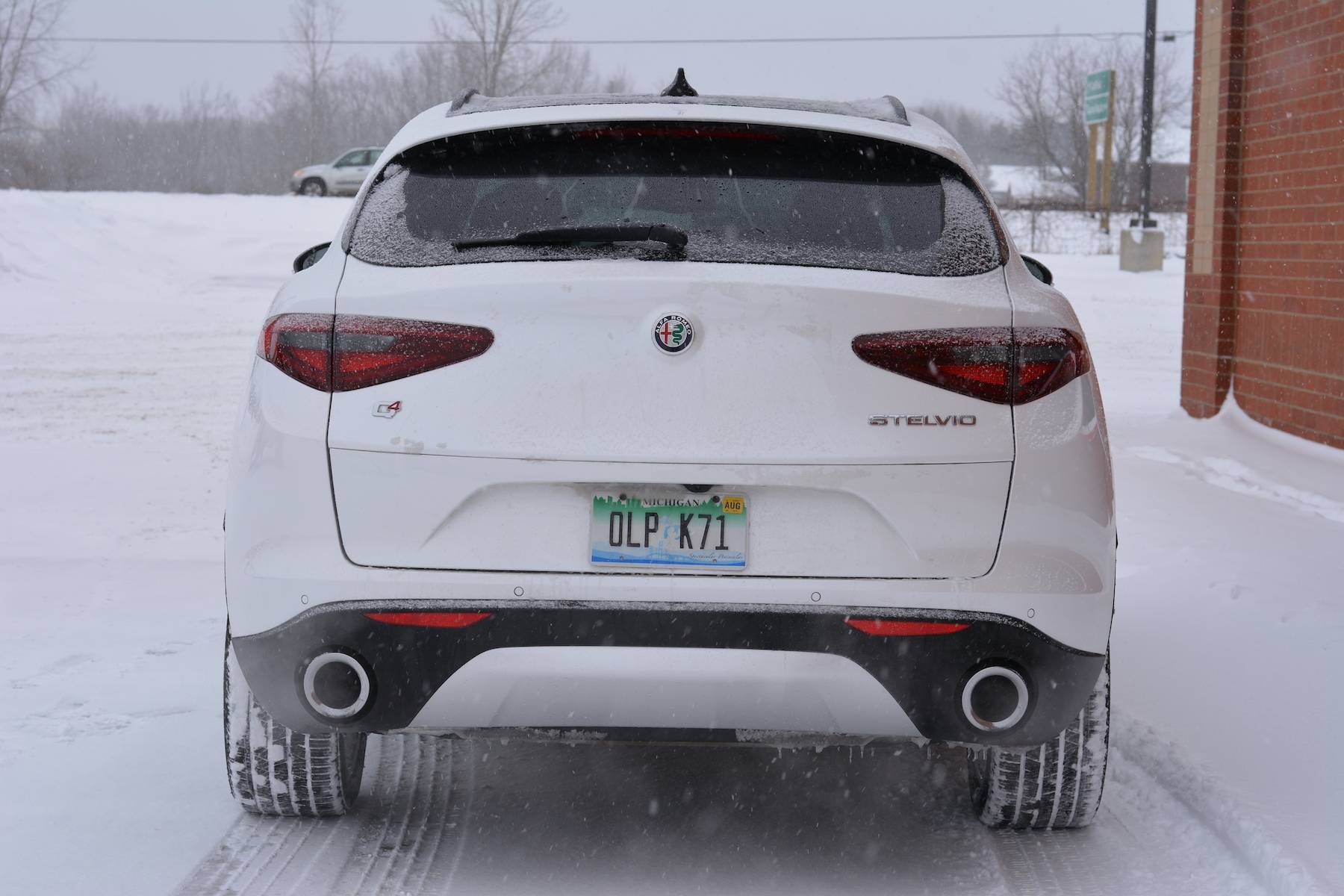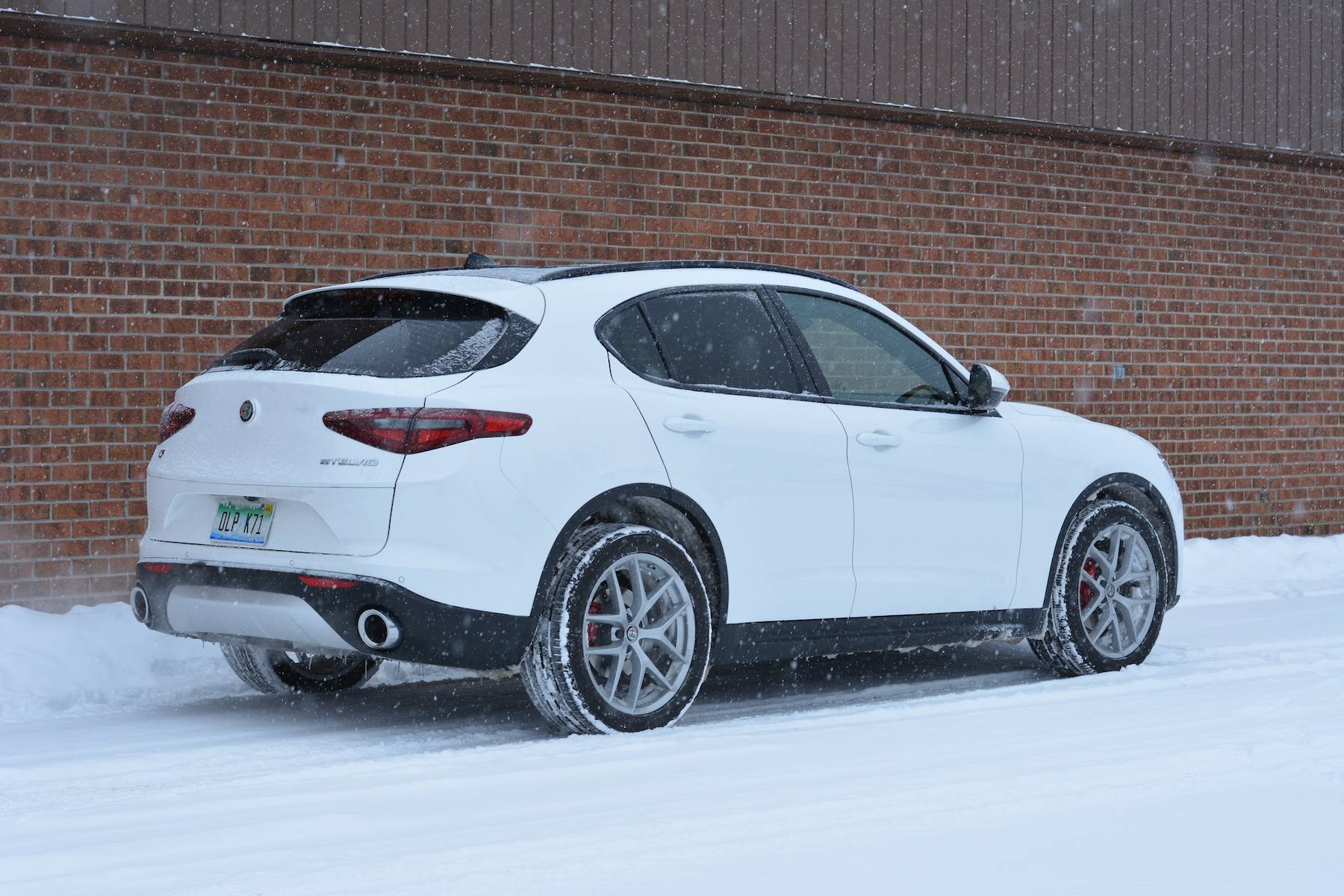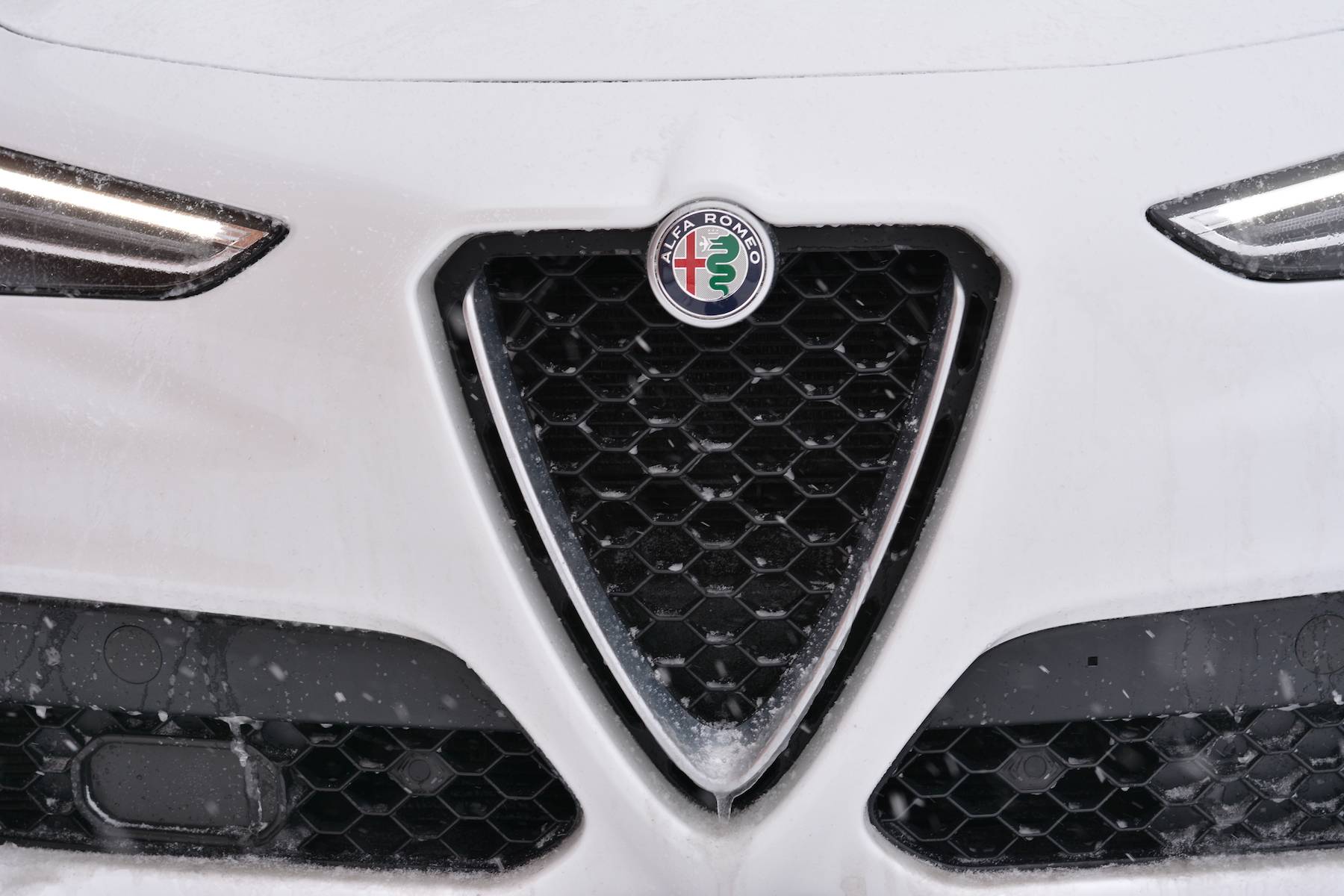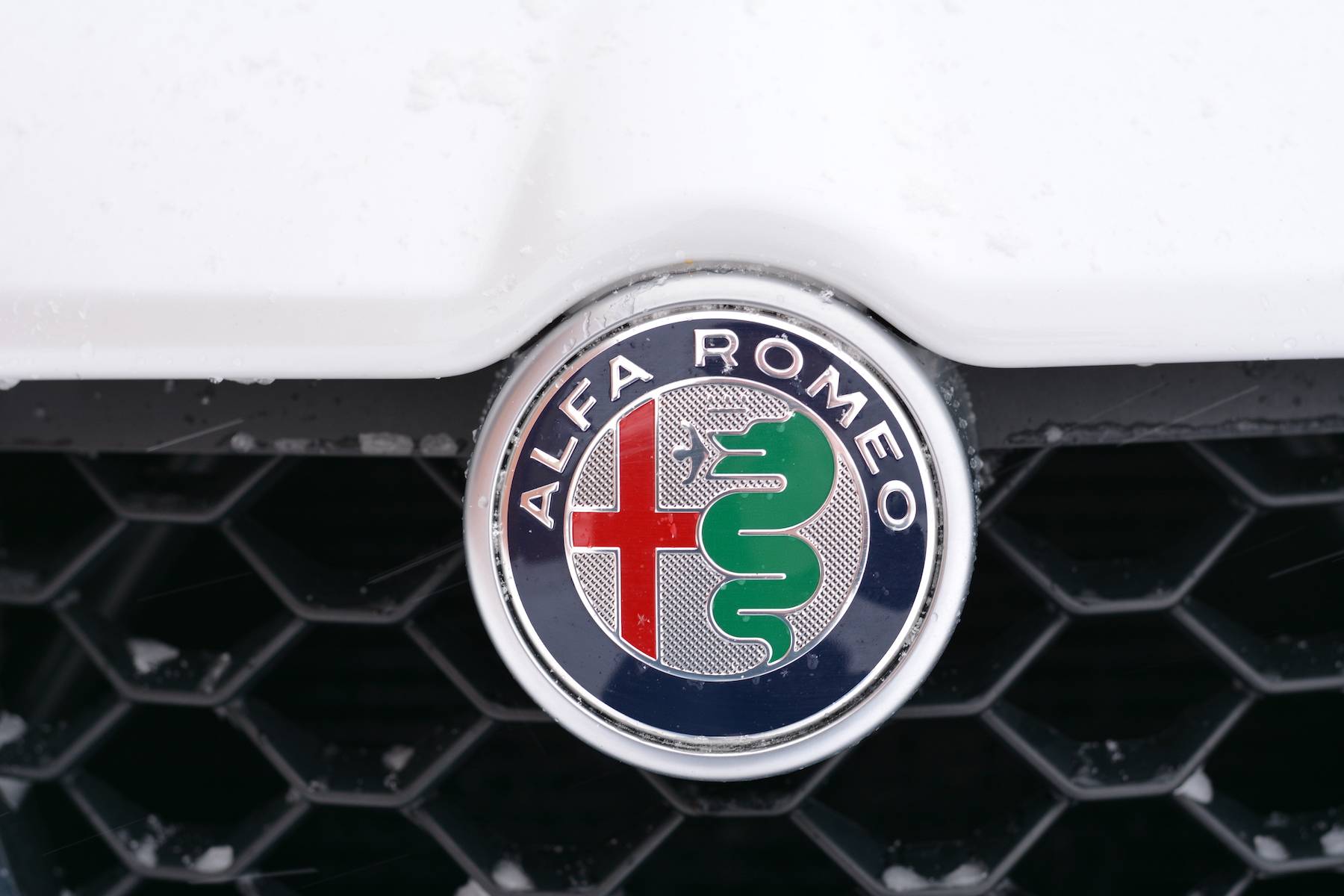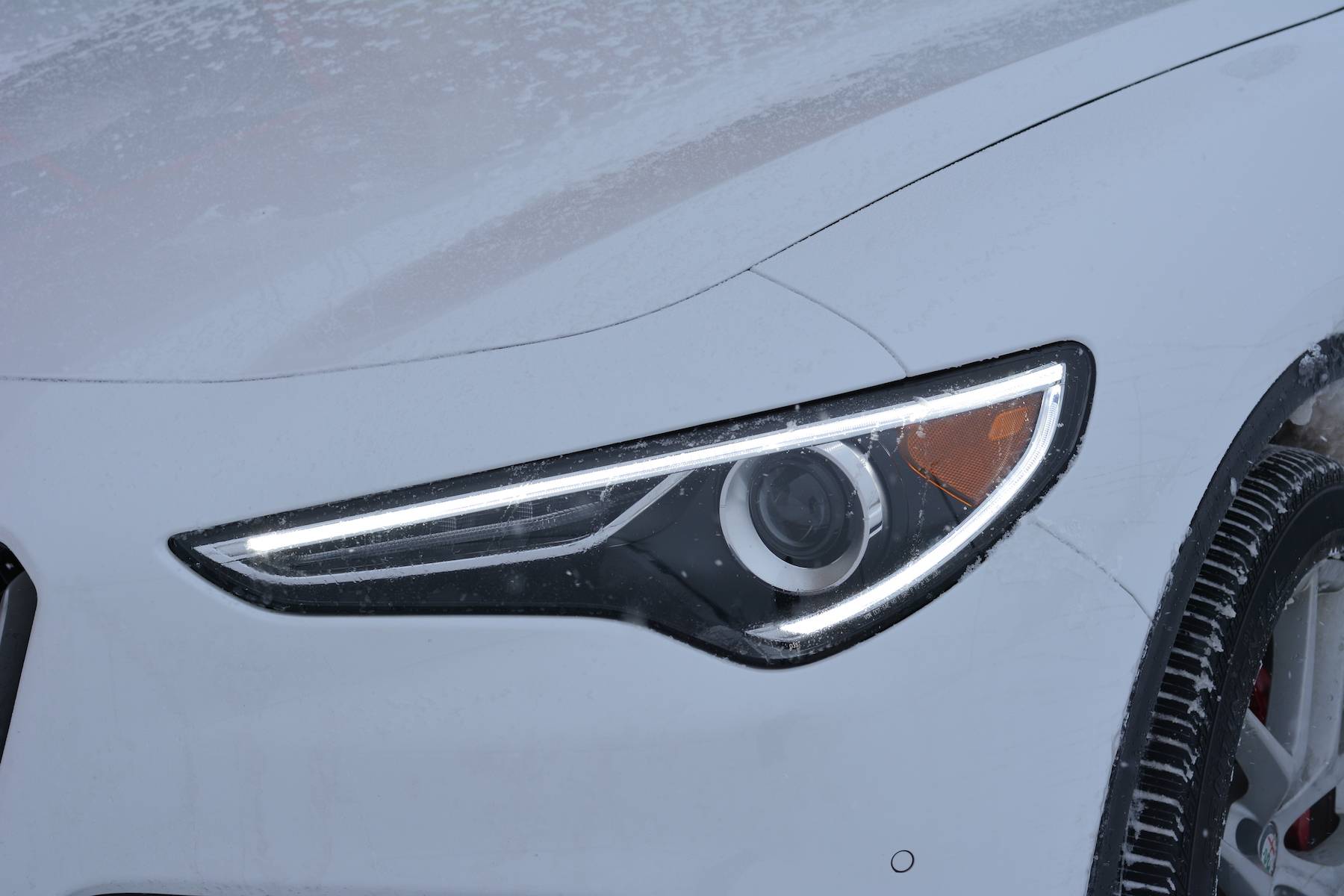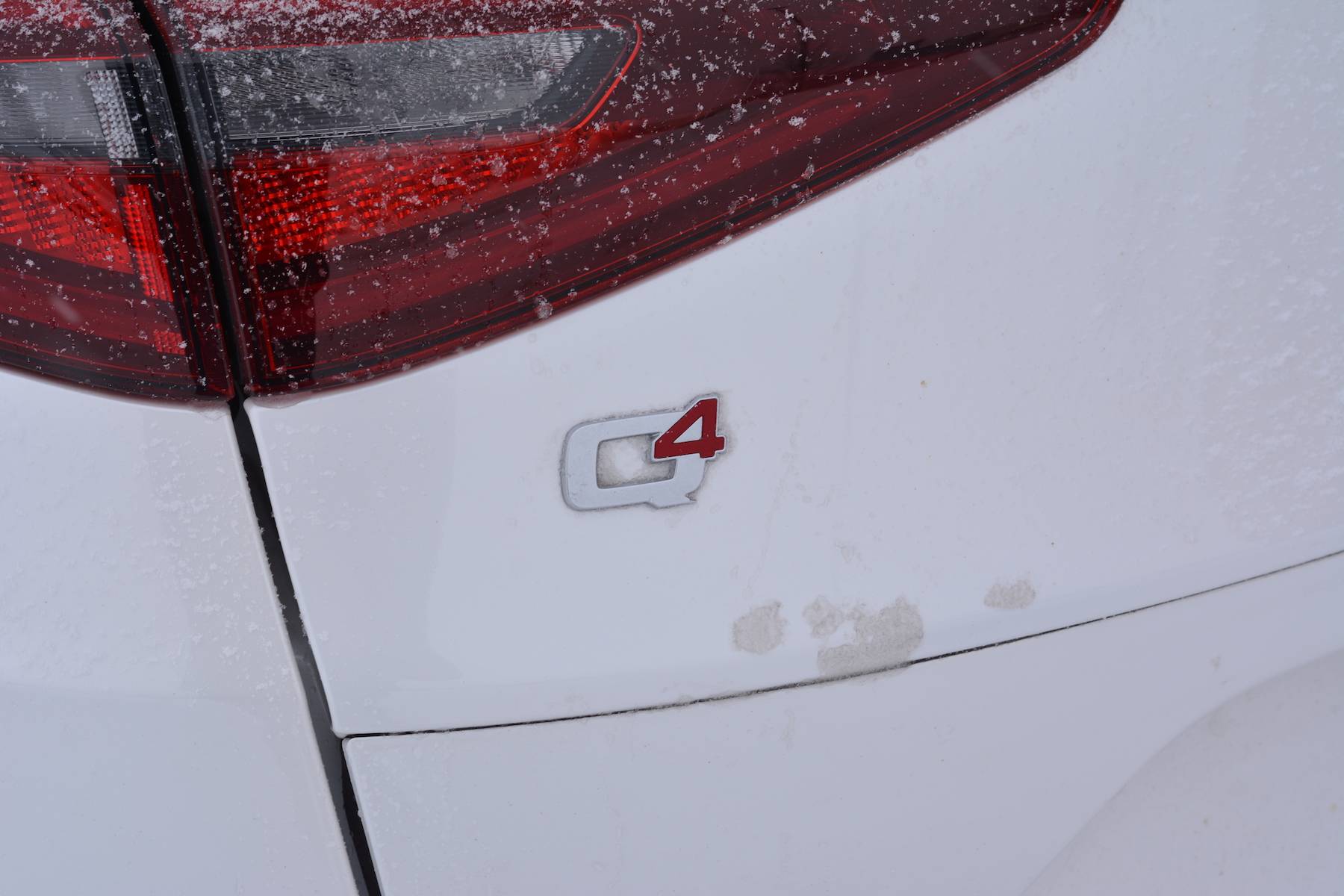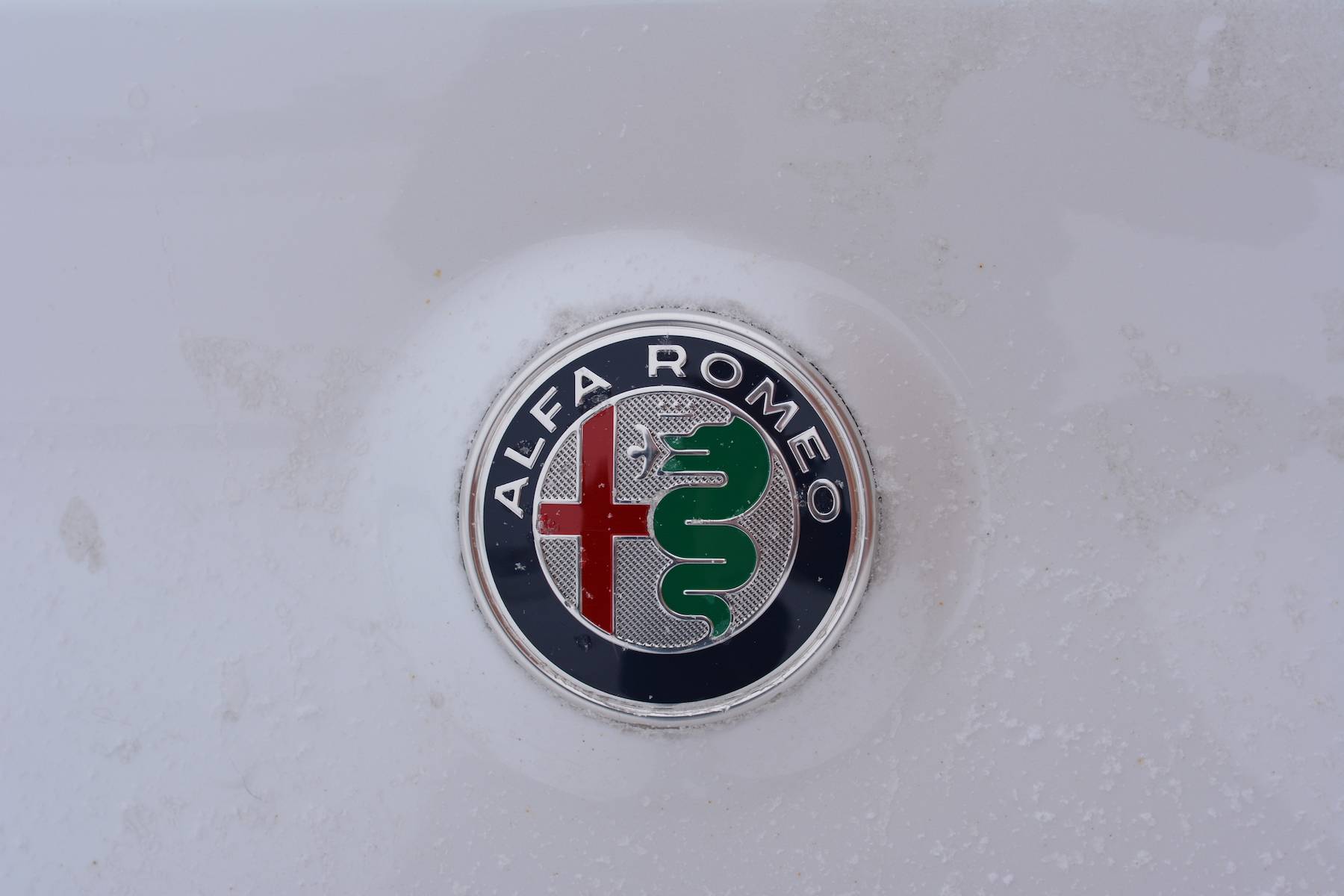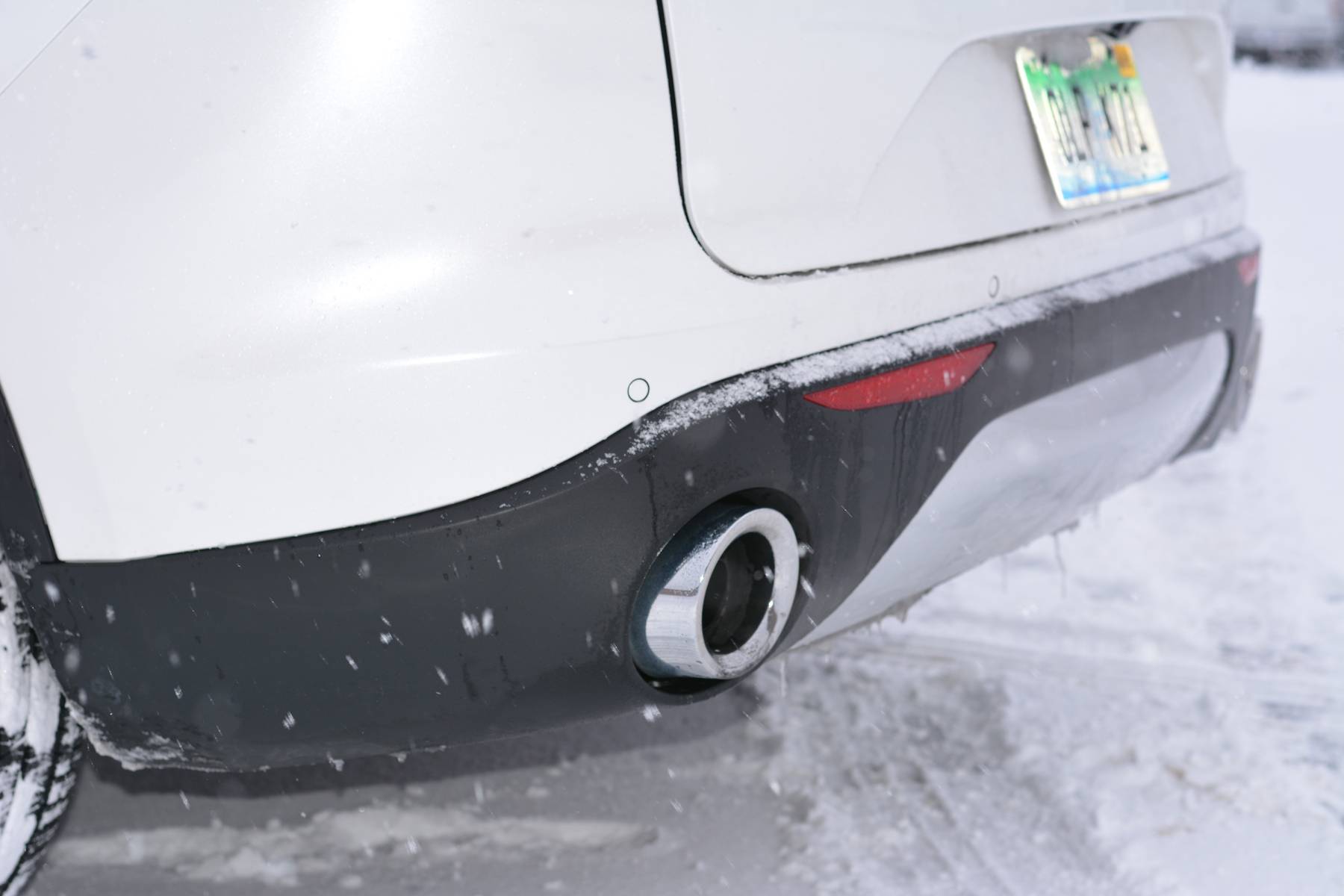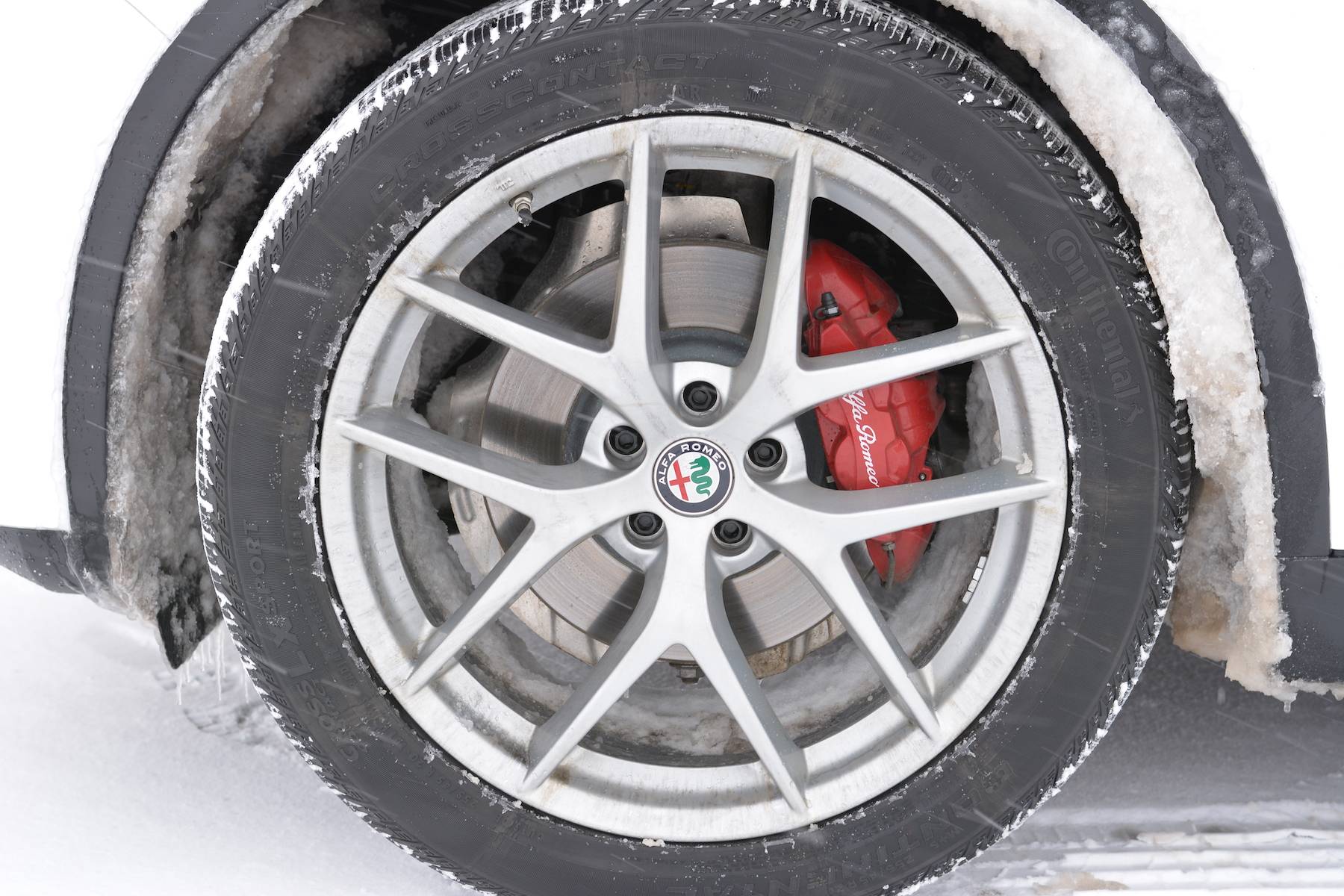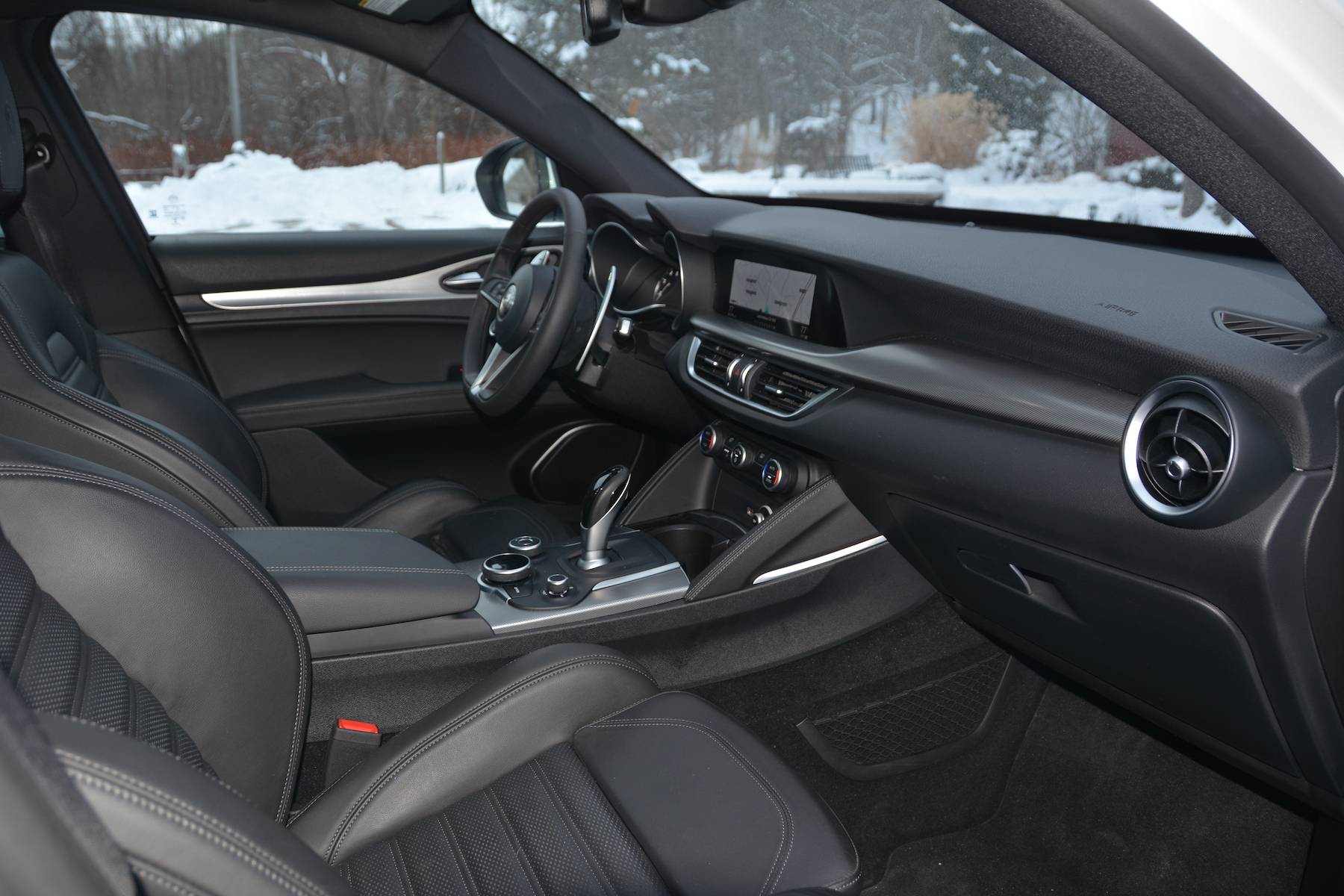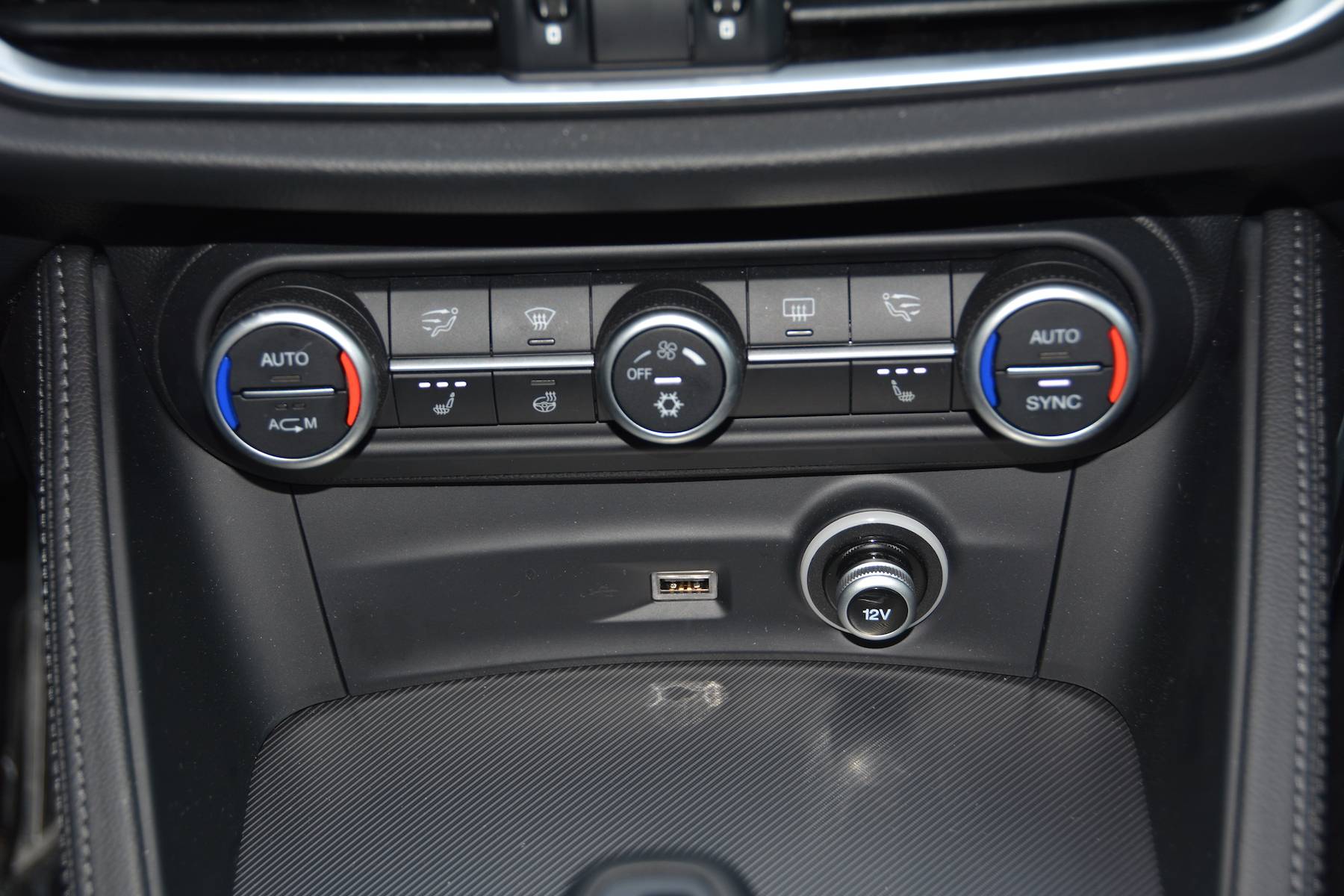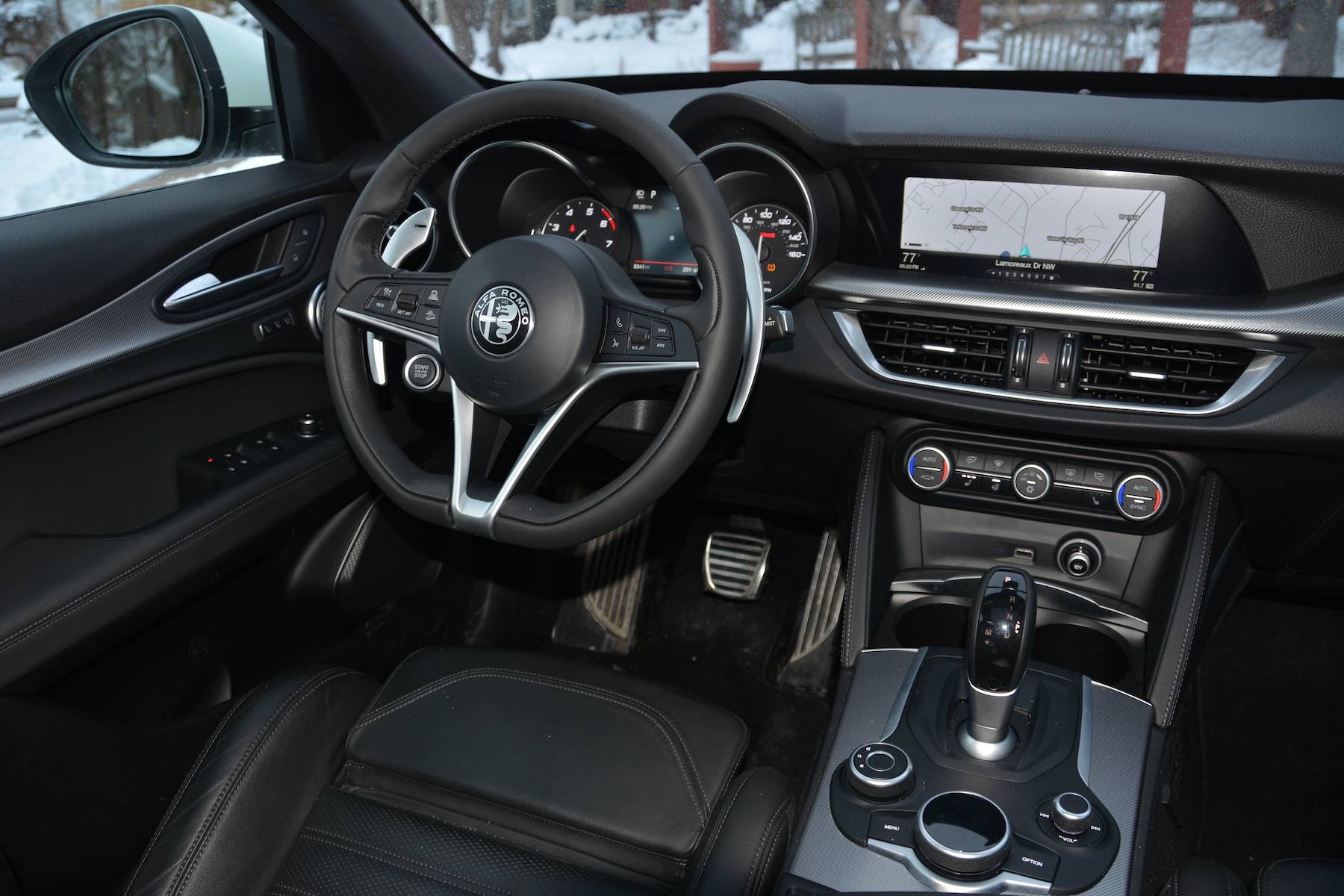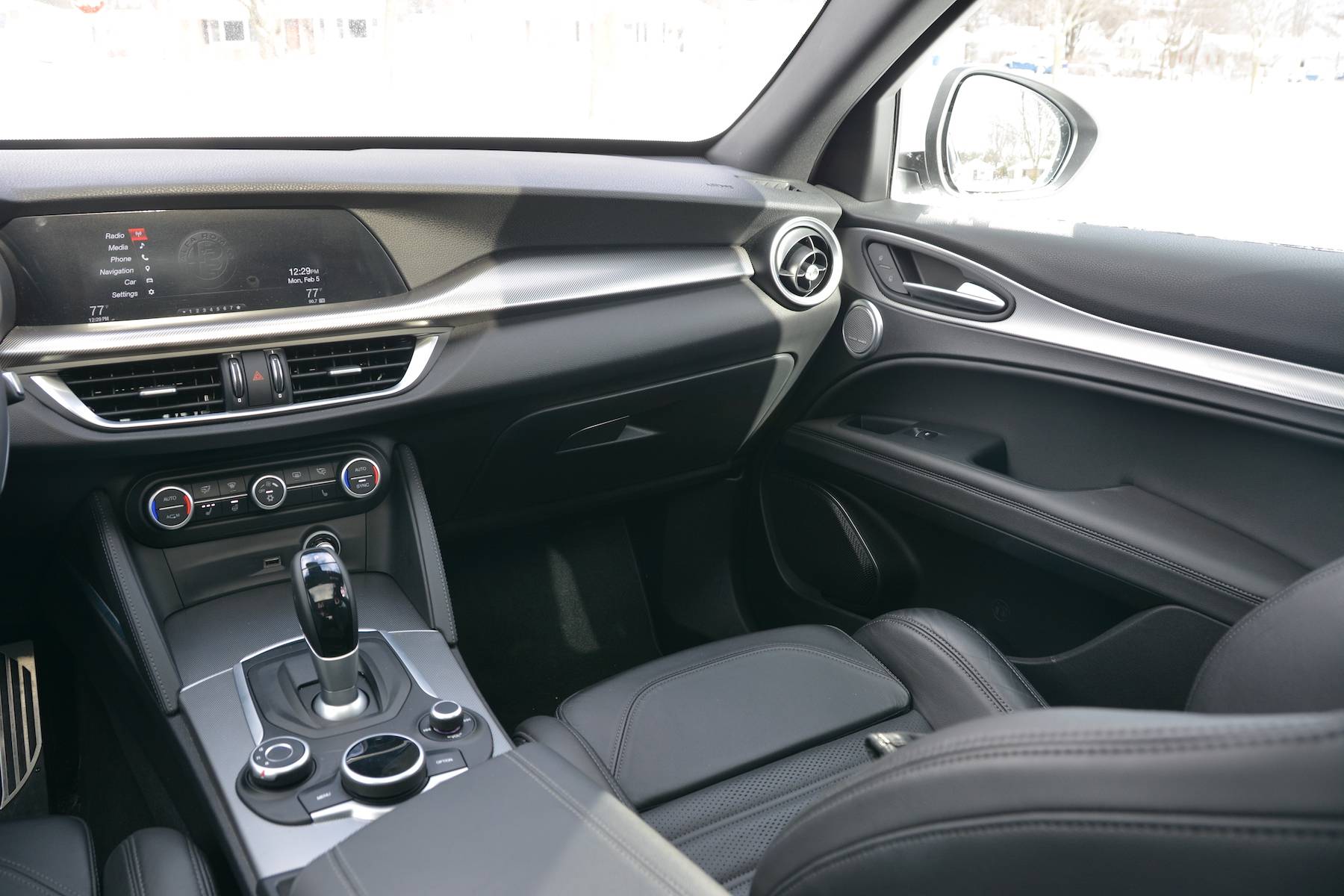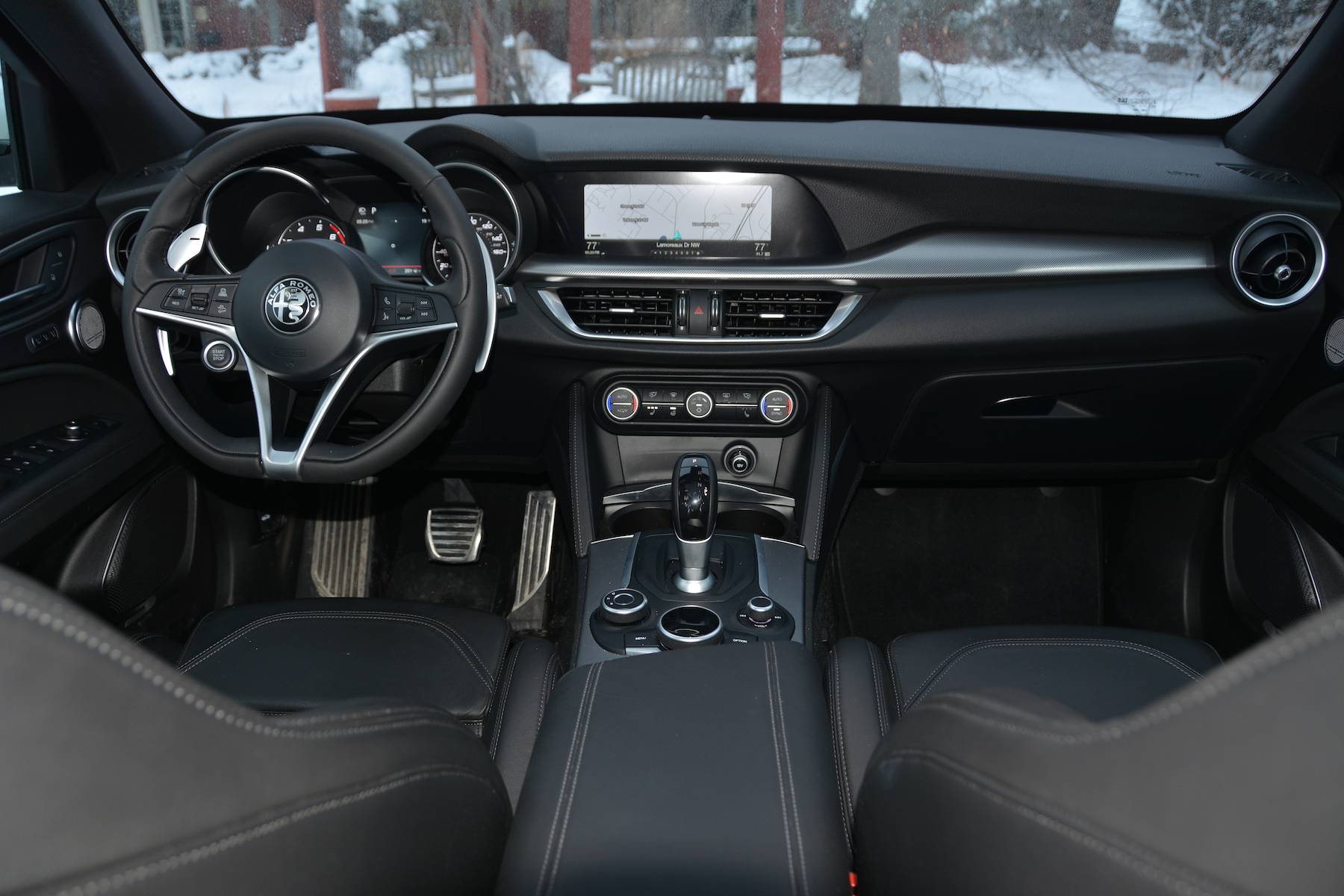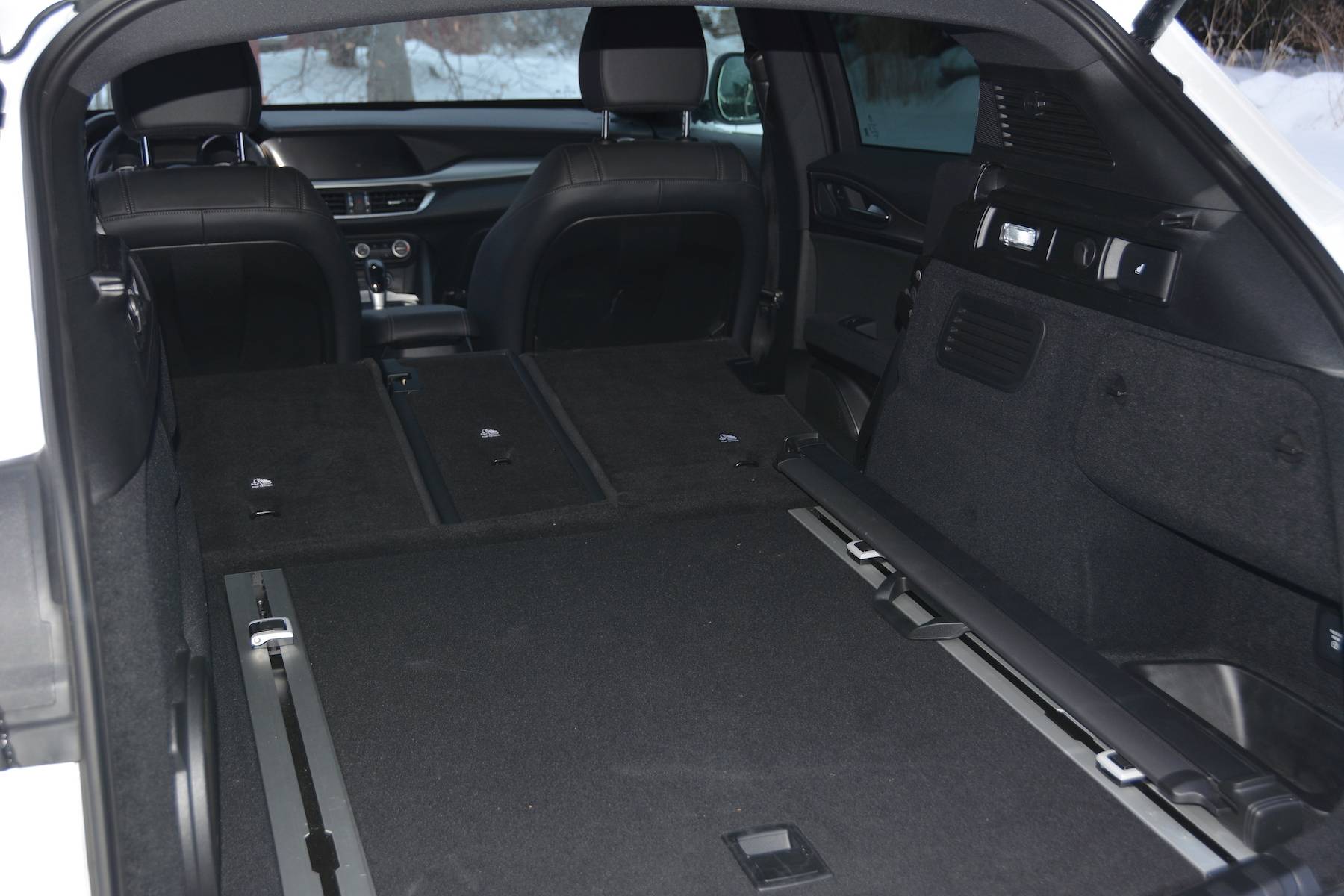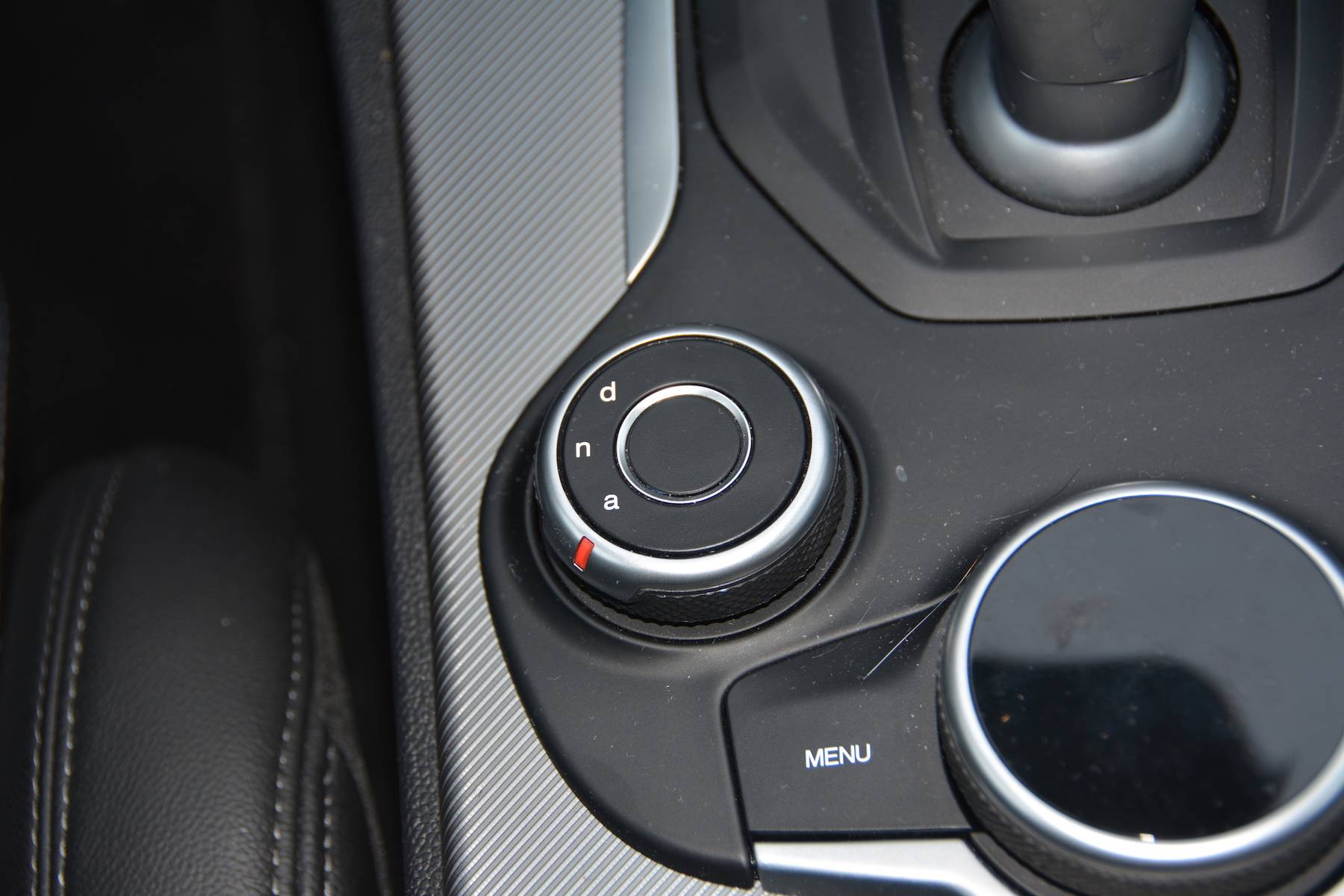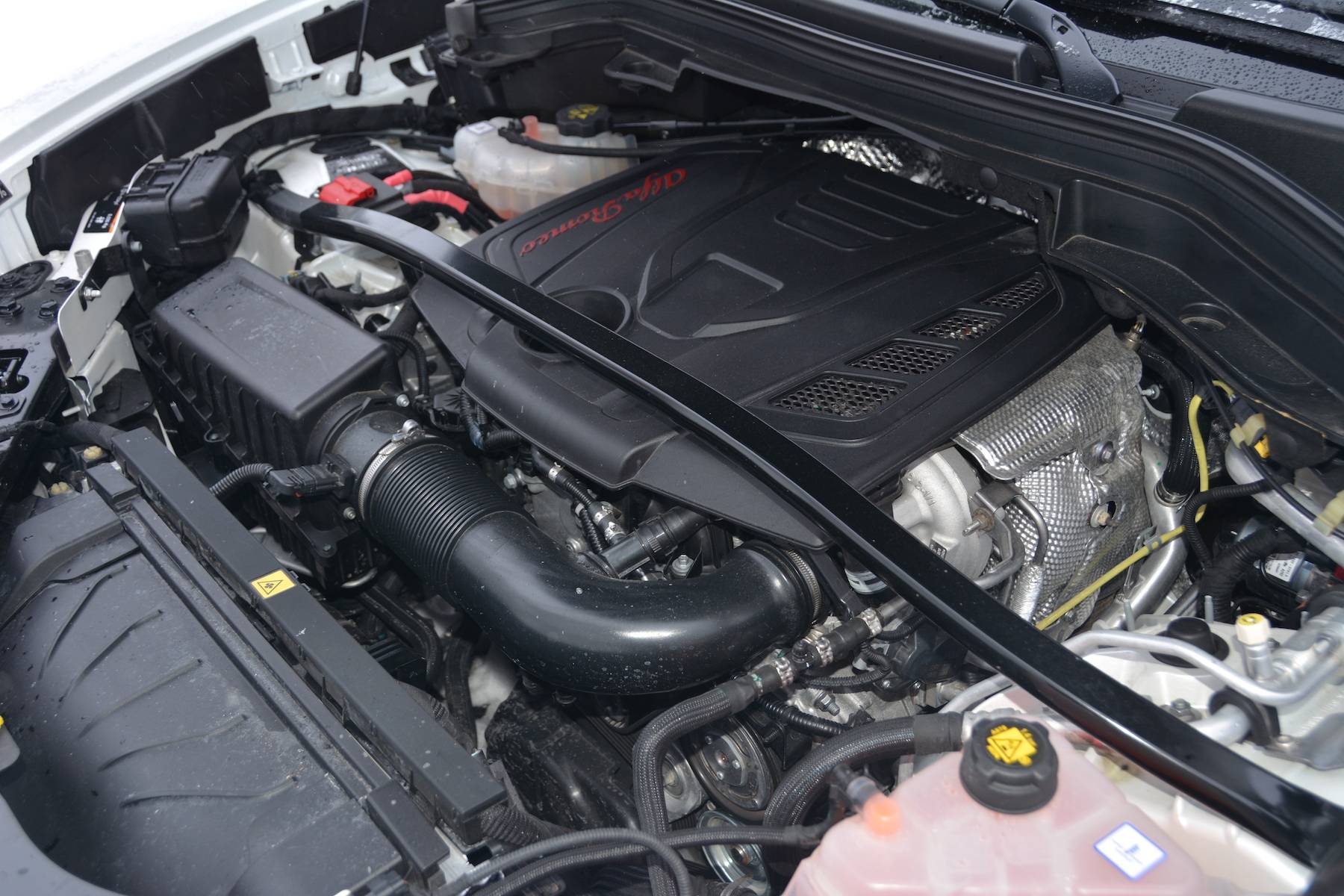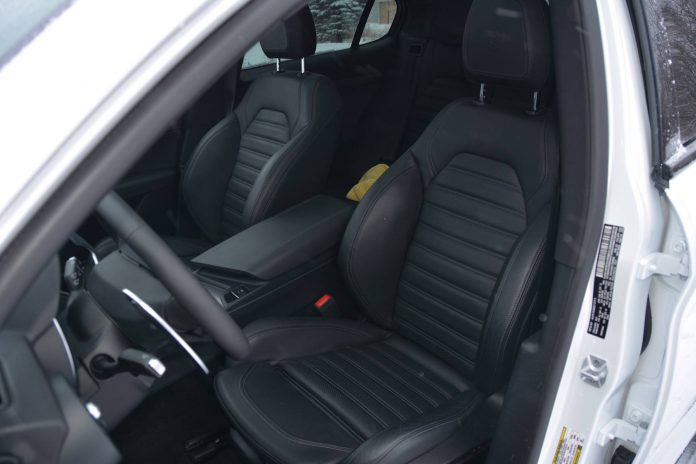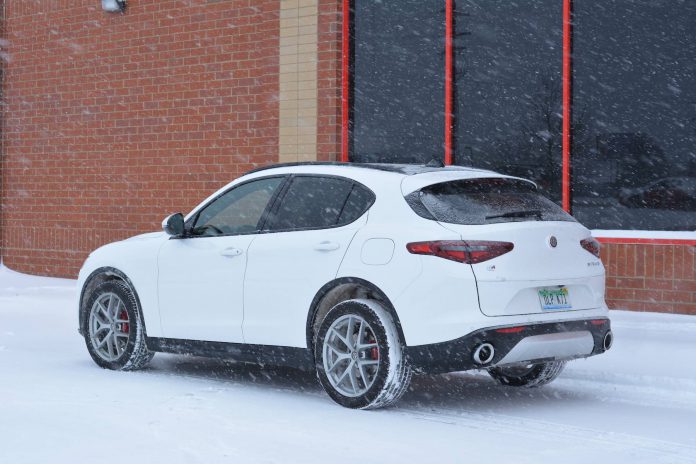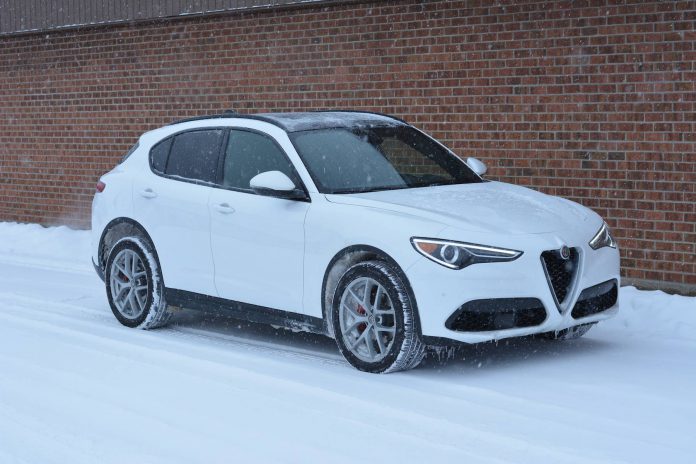When you think of Alfa Romeo, you probably don’t think of SUV’s. Likewise, when you think of SUV’s, Alfa Romeo probably doesn’t spring to mind either. Conceptually, the two are as different as east and west. Yet in this day and age the SUV seems to own the hearts and wallets of the American auto buying public. Sales of SUV’s now exceed those of traditional cars and every manufacturer offers at least one SUV model. Alfa Romeo has chosen to enter the market with the Stelvio, named after the world famous mountain pass in Italy. Now, it takes some audacity to introduce an SUV and name it after a demanding, endlessly switchbacking mountain road that tests the mettle of the worlds best sports cars. We’re delighted to find that the Stelvio lives up to the promise.
It’s a sharp looking SUV. Within the overall shape – and it’s a good shape – they’ve sculpted some details that make the design a winner. Unlike the majority of it’s competitors, Alfa has done a fantastic job of giving it a sense of lithe, muscular tension. It exudes strength, agility, and smoothness. It’s a somewhat understated look but we like it. Speaking of understated, in this day of dinner plate-sized badges on SUV’s, the Stelvio only flashes two small, distinct Alfa Romeo badges on it: one in the V-grille up front, and another in the middle of the rear lift gate. Alfa prefers to let it’s design language do the talking. The familiar tri-lobial grille up front immediately distinguishes the Stelvio as an Alfa. There can be no mistaking it as anything else.
If the design has a weak point, it’s the rear of the Stelvio, which, while attractive, lacks any real distinctive Alfa styling.
The interior is full of beautiful stitched leather and jeweled controls. The seats are comfortable and well-bolstered for support. Well bolstered? In an SUV? Yes, and with good reason. Heated seats and steering wheel are standard in this particular model, which was much appreciated during the cold wintery week we had it. All the controls are easy to find, read, and use. Equally-sized tachometer and speedometer gauges dominate the instrument cluster with a digital information screen between them. An 8” navigation/infotainment screen sits above the center console and is controlled by a knob on the center console. Climate and seat heater controls sit below the infotainment screen. The center console is dominated by the electronic shifter, the infotainment control knob, radio control knob, and Alfa’s D.N.A. switch, which controls the Stelvio’s character and responsiveness.
The leather-wrapped steering wheel is art. I absolutely loved it and the way it felt in my hands. Behind it are two beautiful aluminum shifter paddles, affixed to the steering column. They don’t turn with the wheel but remain stationary on the column. Their large size means they’re always within reach., like on a race car. The left one has a “-“ laser-cut into it and the right one has a “+”. They feel wonderfully weighted and tactile against your fingers. After using these, I think the 4C should come with such wonderful paddles (but maybe in carbon fiber?). While the small plastic ones in the 4C work just fine, the longer ones mean your fingers are always right there next to them, no matter how the wheel is turned. They also feel very special and upscale.
The rear seats are also comfortable, with plenty of leg room. A center tray folds down out of the backrest for backseat passengers and has two cupholders in it. Sitting in back means you can also enjoy the stunning view up through the tinted panoramic sunroof. The seatbacks are split 60/40 and fold *almost* flat, doubling your cargo area by about 100%. With so much room available for hauling things, it’s easy to see why SUV’s appeal to so many American parents.
The Stelvio is actually built on the Giulia platform, which is promising since the Giulia has been getting a lot of awards and rave reviews. It shares its turbocharged 2.0L four-cylinder engine, 8-speed automatic transmission, and the rear-biased Q4 AWD system with the Giulia sedan. It even shares the same carbon-fiber driveshaft.
That’s great, you’re saying, but it’s a freakin’ SUV. Did Alfa completely sell out to the soccer-mom and Starbucks crowd and build a milquetoast people hauler in order to make themselves a bank-load of easy money?
They did not. They built an SUV that is as practical and capable as any on the market but with the soul and ability of a sports car.
During the week we had it, we had only two halfway decent days and then five days of heavy snowfall. In other words, we were able to test the Stelvio in just about every possible weather situation that you might encounter.
The turbocharged 2.0L engine makes a respectable 280hp and 306 ft-lbs of torque. It’s remarkably torquey and the torque comes on powerfully at 2000 rpm’s and pulls madly to it’s 5500 rpm redline. The smooth 8-speed transmission complements the torquey engine by snapping off shifts quickly and relentlessly so that the seamless acceleration feels like it could go on forever. It’s so quick that it feels like there’s a small V8 under the hood. It’ll literally push you back in your seat. The Q4 AWD system engages the front wheels when necessary, otherwise it acts as a rear-wheel drive vehicle. This is a very performance-oriented set-up.
The sport suspension is impressive. It will surprise you. The Stelvio feels more like a competent sport sedan than an SUV. Push it into a corner and remains flat and composed. The steering is razor sharp. In most SUV’s, If you quickly wiggle the steering wheel back and forth while driving, the body jiggles on it’s suspension. The Stelvio doesn’t jiggle at all and just about jumps into the next lane. The handling is sports car quality. It encourages you to dive into corners and rip out the other side. The ride is always firm with a sporting feel but is comfortable and softens the worst bumps and potholes for you.
The bright red Brembo brake calipers with “Alfa Romeo” in white script lurk within the 20” silver wheels like automotive art. They, along with the anti-lock braking system, are extremely communicative and effective at stopping or slowing it down. The effort is easy and the control is superb. Our Stelvio was wisely fitted with Continental Crosscontact mud & snow rated tires for our test. Along with the AWD, they provided excellent grip on both wet and dry pavement and in deep snow.
On dry roads, we quickly got into a rhythm. Switching the transmission to manual and the DNA selector to “Dynamic”, we throttled the Stelvio every chance we got. Shifting up and down through the gearbox with the paddles, we were delighted to find that the Stelvio quickly clicked off shifts as fast as we could click the paddles. We pushed the turbo-four hard and got impressively quick acceleration exiting corners or from a dead stop. In corners, the suspension remained almost flat and absorbed any bumps the road delivered. We found we could drive it like a sports car, winding through the gears, braking hard, pushing through corners with confidence, the AWD lending a hand when things got hairy, and exiting fast, the engine already rocketing the Stelvio up the road towards the next set of curves. It’s exactly what you hoped Alfa Romeo would build but you’re still caught off guard by how good it is.
And if we got tired or traffic got heavy, we’d just bump the shifter over to “D”, turn the D.N.A. knob back to “N (normal)”, and cruise in comfort with the flow of traffic, listening to the radio on the fantastic 14-speaker HarmonKardon stereo. Because it can do the plain-Jane SUV role if you want it to. Oh, you’ll probably still roll through corners a little faster than most other cars, but it can do quiet and boring if you want.
Of course, just as we were getting accustomed to it’s street performance and planning a road trip on some twisty roads, winter rolled back into town and dumped about 8” of snow on us. We switched the D.N.A. selector back to “A (advanced efficiency)” and drove more carefully. Not that we needed too. Between the Q4 AWD system, and the Continental Crosscontact tires, the Stelvio went everywhere we wanted without complaint, issue, or errant slip. Going a little too quickly around sweeping corners buried in snow, you could feel the Q4 AWD system working, applying brakes to some wheels as needed, applying power to some wheels as needed, minimizing slip, and going in the direction I was steering it. Instead of a direct connection between the controls and the performance though, there was the odd sensation of technological intervention that was a little unsettling at first, until I realized it was doing a phenomenal job of keeping the Stelvio safely on the right track. It’s amazingly capable in the snow.
Perhaps a little TOO capable. Once I was confident in it’s abilities, I started getting bored with it. Feeling TOO safe, if you can understand that. Oh, trust me, every mother driving her children to the grocery store in the worst snowstorm of the year would love it and probably feel a newfound sense of confidence and driving ability in her Stelvio. But I’m used to driving a rear-wheel drive car in the winter and love nothing more than doing donuts in the grocery store parking lot and kicking the back end out around corners. Try as I might, the Stelvio was having none of it. So I turned the D.N.A. selector to “D (dynamic),” and went through the infotainment screen menus, hoping to disable every traction control device and have some fun. The Q4 AWD system still kept everything in check. No parking lot donuts for us. It’s just rock solid stable, no matter the condition. Which I suspect most people in the market for an SUV will appreciate.
The base Alfa Romeo Stelvio starts at around $42,000. Our test model, The Stelvio Ti Sport, started a few thousand higher but it had about $10,000 in options on it, so ours came in around $55,000. Which is still incredibly reasonable when cross shopping it with other performance-oriented luxury SUV’s on the market. Curiously, we spotted two other Stelvio’s the week we drove this one, the first ones we’ve seen on the road so far, so word is getting around.
Overall, we were extremely impressed with the Stelvio Ti Sport. For the price, it’s an incredibly capable, stylish, and fun to drive SUV, offering a lot more sport than most SUV’s on the market and just as much utility. If we could change one thing, it’d be to add just a little more horsepower but that should be resolved when the 505 hp Stelvio Quadrifoglio hits the market later this year. If you’re looking for a family hauler that’s engaging to drive when the family isn’t with you, look no further than the Stelvio Ti Sport. Nice job, Alfa.

